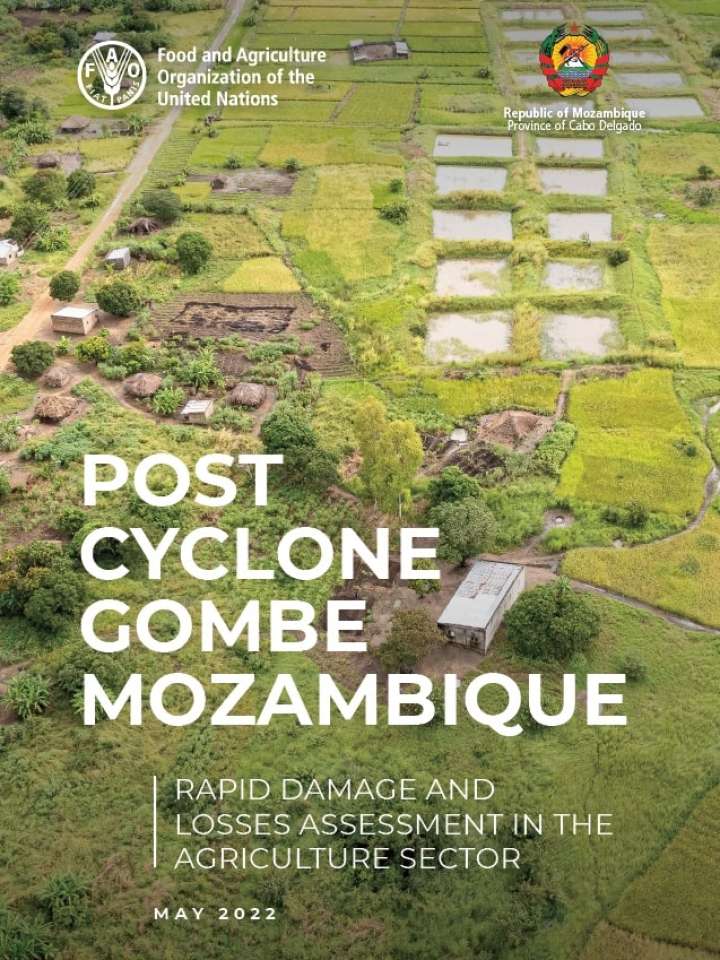Post Cyclone Gombe Mozambique - Rapid damage and losses assessment in the agriculture sector
This publication assesses and verifies damage to agriculture-based livelihoods and identifies the most urgent needs with regard to the food and agriculture sector. Tropical Cyclone Gombe hit Mossuril District, in Mozambique’s Nampula Province, in March 2022, causing floods that swept away livestock, fishing assets, and inundated crop fields, destroying livelihoods and damaging infrastructure.
The report provides several recommendations to promote recovery and strengthen the resilience of the agriculture sector:
- Prioritize continuation of food assistance;
- Provision of short-cycle seeds and other agricultural inputs
- Reconstruction and introduction of improved storage facilities for grains;
- Provision and repair of fishing equipment and boats;
- Reconstruction of fish conservation facilities;
- Provision of veterinary medicines and vaccines;
- Promote restocking programs for small livestock;
- Provide technical assistance in all interventions.
